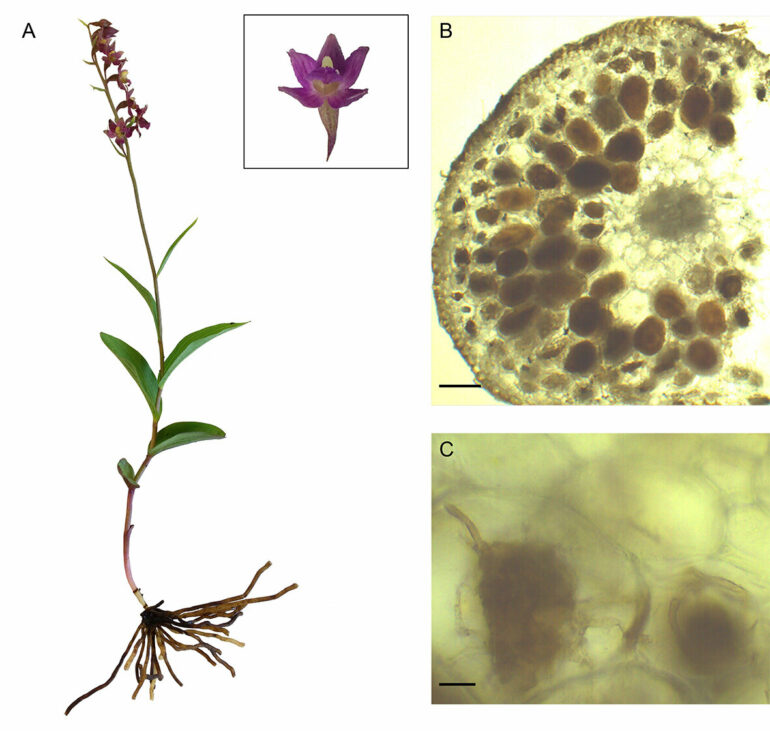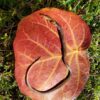Most plants worldwide live in symbiosis with fungi. Often there is an exchange of nutrients from which both partners benefit. In numerous other cases, however, the plants feed unilaterally at the expense of the fungi.
International research groups led by Prof. Dr. Gerhard Gebauer at the University of Bayreuth have now presented a new method in the journal New Phytologist that makes it possible for the first time to apply isotope analyses to all forms of symbiosis between plants and fungi without restrictions. In principle, it will be possible in the future to determine which and how many nutrients each plant obtains from fungal partners.
Insights into the type and amount of nutrients that plants extract from fungi intertwined with their roots are informative for understanding biodiversity and the functioning of ecosystems. Carbon is of particular interest in this context: According to a still widely held view, plants produce all the carbon they need through their own photosynthesis and are therefore referred to as autotrophic.
However, many plants are heterotrophic: they use symbiosis with fungi, known as mycorrhiza, to extract carbon from their fungal partners: There are even plants that meet all their carbon needs in this way and have completely ceased their own photosynthesis.
Isotope analyses offer insights into belowground food transfer
For many years, research into fungal-to-plant food transfer has taken advantage of the fact that the carbon produced by the plants themselves has an isotope profile different from the carbon present in the fungal partners. This means that the isotopes of carbon—these are carbon atoms that differ solely in the number of neutrons in their nucleus—occur in different abundance in fungal partners than in the carbon that plants produce through their own photosynthesis.
Isotopic analysis of the carbon stored in plants therefore allows conclusions to be drawn about the amount of carbon that comes from fungi. However, these calculations are only possible if two reference values are known: the isotopic profile of carbon in autotrophic plants and the isotopic profile of carbon in fungal partners.
Between the two reference values lies the isotopic profile of carbon in heterotrophic plants, which extract part of the required carbon from their fungal partners. In this way, isotope research has already brought to light a variety of new insights into symbioses between fungi and plants.
A door opener for ecosystem research
Until now, however, research was subject to a considerable restriction: The fungal partners had to form their own fruiting bodies and store their carbon in them. Only under this condition was fungal carbon accessible in the quantities required for isotope analyses. However, it has long been known that only about ten percent of fungi that live in symbiosis with plants form fruiting bodies. Consequently, one of the two reference values needed to reliably determine the type and extent of plant heterotrophy was usually missing.
The Bayreuth research team has now found a solution to this problem. The scientists have succeeded in extracting fungal carbon from the fungal filaments—the so-called hyphae—that were intertwined with the roots of plants. They were also able to isolate fungal nitrogen and hydrogen in this way.
The studies, published in New Phytologist, include a variety of examples of applications of isotope analysis that the new technique has now made possible. “The doors are now wide open for ecosystem research on symbiotic relationships between plants and fungi,” says Prof. Dr. Gerhard Gebauer.
Case studies on forest plants and orchids
The studies focused on fungi without fruiting bodies that live in an arbuscular mycorrhiza with small leafless plants incapable of photosynthesis and thus completely heterotrophic. This is a particularly common form of symbiosis between plants and fungi that goes back a long way in evolutionary history.
Research partners in Japan and Australia provided the forest plants to the scientists in Bayreuth, who succeeded in detaching cell filaments (hyphae) of the fungi from the root network of the forest plants and preparing them for isotope analyses. The analyses provided, for the first time, isotopic abundances of fungal partners of the arbuscular mycorrhiza with entirely heterotrophic plants.
Another focus of the research was the isotope profiles of orchids native to northeastern Bavaria, which also form a mycorrhiza with fungi that do not produce fruiting bodies. However, an orchid native to Hawaii was also included in the studies for comparison.
Pelotons of fungi—these are small ball-shaped clusters of hyphae—were isolated from the root cells of the orchids, which proved to be particularly difficult. Preliminary isotopic analyses indicate that the selected orchids also extract a significant portion of their nitrogen and other nutrient requirements from the fungi.
More information:
Novel insights into orchid mycorrhiza functioning from stable isotope signatures of fungal pelotons. New Phytologist (2023). DOI: 10.1111/nph.18991. nph.onlinelibrary.wiley.com/do … ll/10.1111/nph.18991
Sofia I.F. Gomes et al.: Stable isotope natural abundances of fungal hyphae extracted from the roots of arbuscular mycorrhizal mycoheterotrophs and rhizoctonia-associated orchids. New Phytologist (2023). DOI: 10.1111/nph.18990. nph.onlinelibrary.wiley.com/do … ll/10.1111/nph.18990
Provided by
Bayreuth University
Citation:
When plants feed on fungi: Novel method enables unrestricted isotope analyses (2023, June 22)



